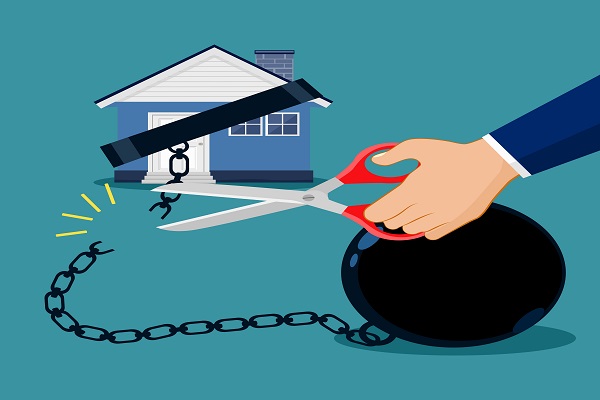How Much Can I Borrow on a Bridging Loan?
Unlocking financial flexibility
In the dynamic landscape of real estate and property investment, timing is often a critical factor. Whether you’re looking to secure a new property before selling your current one or investing in a time-sensitive opportunity, bridging loans offer a flexible and swift financing solution. One of the key questions on the minds of borrowers is, “How much can I borrow on a bridging loan?” In this blog post, we delve into the details to provide insights on borrowing limits and considerations when exploring this financial avenue.
Understanding bridging loans
Before diving into the borrowing limits, let’s take a moment to understand what bridging loans are. Bridging loans act as a short-term financing option, typically used to bridge the gap between the purchase of a new property and the sale of an existing one. These loans are designed to be repaid quickly, often within 12 to 18 months, and are secured against the borrower’s property or a combination of properties.
Borrowing Limits:
To determine how much you can borrow on a bridging loan, several factors come into play. Here at BridgingLoans.co.uk, we believe there are a few key considerations:
Loan-to-Value (LTV) Ratio: The LTV ratio is a crucial factor that influences the amount you can borrow. It represents the percentage of the property’s value that the lender is willing to finance. Bridging loans often have higher LTV ratios compared to traditional mortgages, sometimes reaching up to 75–80%.
Property Valuation: The value of the property or properties being used as security is a pivotal factor. A professional property valuation is typically required to determine the loan amount. Bridging lenders may use different methods to assess the value, and it’s essential to have a clear understanding of this valuation process.
Exit Strategy: Bridging loans are short-term solutions, and lenders are keen on understanding your exit strategy—how you plan to repay the loan. This could involve selling the property, refinancing with a traditional mortgage, or another viable repayment method. A well-defined exit strategy can positively impact the borrowing amount.
Credit History and Financial Status: While bridging loans are primarily asset-backed, lenders may still consider your credit history and overall financial status. A strong credit profile can enhance your borrowing capacity and may result in more favourable terms.
Interest Rates and Fees: It’s crucial to factor in the interest rates and fees associated with bridging loans. These costs can impact the overall amount you’ll need to repay. BridgingLoans.co.uk recommends carefully reviewing the terms and conditions of different lenders to find the most suitable option for your financial situation.
Bridging loans offer a valuable tool for property investors and homeowners seeking short-term financing solutions. The amount you can borrow on a bridging loan depends on various factors, including the loan-to-value ratio, property valuation, exit strategy, credit history, and the terms offered by the lender.
For personalised advice and information tailored to your specific circumstances, it’s advisable to consult with financial experts and utilise reputable sources such as BridgingLoans.co.uk. By understanding the intricacies of bridging loans and considering the factors mentioned, you can make informed decisions to meet your financial goals and navigate the exciting yet challenging world of real estate investment.
Exploring the Different Exit Strategies for Bridging Loans
Bridging loans have ballooned in popularity over recent years due to their flexibility and the fast approval process that comes with them. This has made bridging finance the preferred choice for property buyers and investors. These short-term loans serve as a lifeline for those who need quick funds to bridge the financial gap during property transactions. Although gaining a bridging loan can be relatively easy, it’s crucial to have a well-thought-out exit strategy to ensure a smooth transition when the loan term ends; this is usually anywhere up to 12 months.
Conventional mortgage refinancing
One of the most common exit strategies for bridging loans is to secure a traditional mortgage to replace short-term financing. This option works best when the borrower anticipates that they will have improved their creditworthiness and property value during the bridging loan term. Conventional mortgage refinancing offers longer repayment periods and lower interest rates, providing you with financial stability for the future.
Property sale
Selling the property is another exit strategy that borrowers often employ. This approach is suitable for individuals who initially acquired the property solely for investment purposes or when circumstances change and the property is no longer needed. By selling the property, borrowers can repay the bridging loan in full. Any remaining profit can be reinvested in other ventures.
Cash reserves
Borrowers who have access to liquid assets or cash reserves can use them to pay off the bridging loan. For those who are in this situation, this is the best option. This option avoids additional debt and the potential stress associated with finding alternative financing. By using cash reserves, borrowers can swiftly clear the loan, allowing them to focus on their property goals without unnecessary financial burden.
Refinance with a new bridging loan
In some cases, borrowers may find that they need to extend their bridging loan due to unforeseen circumstances or delays in their exit plans. In such situations, refinancing with a new bridging loan can be an option. This approach provides borrowers with more time to complete their exit strategy, although we strongly advise you to carefully assess the costs and terms of the new loan.
Equity release
If the property has appreciated significantly in value during the bridging loan term, borrowers may consider an equity release as an exit strategy. Equity release allows homeowners to access a portion of their property’s value while continuing to live in it. This option enables borrowers to pay off a bridging loan and access funds for other purposes without selling the property outright.
Top Considerations for Choosing the Right Bridging Loan Term
Bridging loans have the potential to be a flexible, affordable, and accessible solution when you need a short-term financial boost in a hurry. Once typically associated with commercial borrowers and strict business applications, recent years have seen more everyday borrowers consider these fast-access funding solutions than ever before.
But while it can be comparatively straightforward to apply for and receive a bridging loan, it is not a facility to take out without careful forethought. Careful consideration of several key factors is essential to ensuring you make the right decision, one of which is the most appropriate term for your bridging loan.
It’s possible to take out a bridging loan over a period of anything from a couple of weeks to around 18 months. Interest and borrowing costs are typically ‘rolled up’ into the final loan balance, with no monthly repayments required in the interim.
The question is, how do you know what bridging loan term is right for you? More importantly, what are the most vital considerations you need to factor in prior to deciding when you will pay your lender back?
Six essential bridging loan term considerations
- The strength of your exit strategy
A core component of any bridging loan is the exit strategy, i.e., how and when you plan to repay the loan. Whether it’s the sale of a property or expected income from a business or inheritance, a solid exit strategy reassures lenders about your repayment capabilities. However, if your exit strategy isn’t set in stone or fails to generate the expected revenues when that time comes, a longer term may be essential to enable you to raise the money needed to repay your loan.
- Monthly interest payable
Considering the interest payable each month on your bridge loan is vital. You will typically find that while the monthly interest rates on a longer-term bridging loan are lower, what you end up repaying is significantly higher. It’s the same with almost all types of personal and commercial loans: longer repayment terms equate to higher overall borrowing costs. In addition, lenders often show preference to borrowers who intend to repay their loans as quickly as possible, which are considered lower-risk transactions.
- Penalties for missing deadlines
Missed or late payments can result in penalties that can significantly impact your total repayment, along with your credit rating. A shorter bridging loan term might sound appealing initially due to the potential to make savings, but it’s important to consider your repayment capacity before committing. You’ll have a fair amount of freedom when it comes to determining your own preferred repayment date, but the last thing you want is to realise subsequently that you did not give yourself enough time.
- Issues that could affect the ability to repay
Unexpected issues such as market downturns, property sales that fall through, or business performance problems could affect your ability to repay. Assessing these potential risks in advance is essential; all potential outcomes should be considered where your exit strategy is concerned. Ideally, you should be looking to choose a bridging loan term that provides something of a buffer in the event that you face any unexpected yet inevitable issues along the way.
- Potential savings with prompt repayment
Where possible, it’s worth placing emphasis on the potential savings of repaying as soon as possible, with a shorter term. Though this means less time to come up with the full balance and a potentially higher monthly rate of interest, the total amount you pay will always be lower when you repay your loan as promptly as possible. Again, you need to ensure you allow yourself a realistic period of time to raise the funds needed to repay your debt.
- Early repayment options without penalties
Repaying earlier than agreed can save you a substantial amount in interest payments and overall borrowing costs. However, not all bridging loan providers offer penalty-free early repayments. Check directly with your provider to confirm if this is an option. Depending on your lender’s flexibility, you could potentially choose a longer-term bridging loan, but with the aim of repaying it earlier if doing so proves to be feasible.
Renovating Old Structures: Bridging Loans for Historical Conversions
Transforming historical buildings is a thrilling and demanding venture that calls for exceptional skills and expertise. While it results in a remarkable metamorphosis that conserves a fragment of the past, it also necessitates considerable financial investment. That’s where bridging loans come into play, a popular funding alternative for property conversions.
This article delves into the intricacies of bridging loans for property conversions, with a specific focus on the conversion of historical buildings.
Understanding bridging loans
Before delving into the specifics of employing bridging loans for property conversions, it’s vital to grasp their essence. Bridging loans are a short-term financing solution that enables borrowers to swiftly secure funds, typically within a matter of weeks. These loans commonly bridge the gap between property purchases and long-term financing or cover the expenses of renovations and other outlays. Secured against the property itself, these loans empower lenders to sell the property in the event of a loan default, recouping their investment.
Bridging loans for property conversions
Historical buildings possess an unmatched allure and charisma that contemporary structures cannot emulate. Converting such buildings to serve new purposes necessitates meticulous planning, reflection, and a substantial financial commitment. Herein lies the value of bridging loans, as they provide rapid access to funds that can be used for conversion expenses.
One of the advantages of employing bridging loans for property conversions lies in their adaptability to the borrower’s specific needs. For instance, the loan structure can encompass the property’s purchase cost as well as renovation or repair expenses. Furthermore, bridging loans can be tailored to offer repayment flexibility, which proves advantageous for lengthy conversion projects.
When contemplating a bridging loan for a historical property conversion, it is imperative to collaborate with a lender well-versed in this domain. Converting historical buildings mandates a unique set of skills and knowledge, including an understanding of preservation and restoration techniques, along with adherence to local regulations and requirements.
Preserving heritage
Effecting a transformation in a historical structure necessitates a delicate equilibrium between preserving the property’s historical character and adapting it for modern usage. This endeavour poses challenges, as restrictions may govern alterations to the building. Nonetheless, with the right approach and expertise, a successful conversion can uphold the building’s historical significance while rendering it functional for contemporary purposes.
A pivotal element of a prosperous historical property conversion lies in assembling a team of experts capable of guiding and advising throughout the process. This team should encompass architects, engineers, and contractors well-versed in working with historical structures. Moreover, it is crucial to collaborate with a lender who comprehends the distinctive obstacles posed by historical property conversions, offering tailored financing solutions to suit project-specific requirements.
Converting a historical building into a new functional space is a gratifying and demanding undertaking, necessitating meticulous planning, expertise, and financial backing. Bridging loans serve as an exceptional financing avenue for property conversions, providing swift access to funds and repayment flexibility. When contemplating a bridging loan for a historical property conversion, it is essential to partner with a lender experienced in this realm and assemble a team of specialists capable of guiding and advising throughout the process. With the right approach, a successful historical property conversion can preserve the building’s heritage while rendering it relevant for contemporary purposes.
Criteria for Bridging Loans in Northern Ireland
With the support of an experienced broker, organising a bridging loan in Northern Ireland can be fairly straightforward. Even so, you still need to understand the eligibility criteria that apply to bridging finance in general before submitting an application for a Northern Ireland bridging loan.
What is a bridge loan?
A bridging loan is a specialist short-term secured loan that can be organised and accessed much faster than any comparable high-street loan. As the name suggests, bridging finance is used to “bridge” a temporary financial gap and is typically repaid within a period of one to 12 months.
With all the essential paperwork in place, a bridging loan can be authorised in as little as a few working days. This makes it an ideal facility for time-critical purchases and investment opportunities, such as purchasing properties at auction.
Bridging finance is a popular tool for property developers and investors looking to fund short-term projects as affordable as possible. With monthly interest as low as 0.5% (sometimes less), bridging finance can be hugely cost-effective when repaid promptly.
There are also no limitations placed on how much can be borrowed (based on the value of the assets used as security for the loan) or how the funds can be allocated after being received.
What are the main eligibility criteria for Northern Ireland bridging loans?
Eligibility for bridging finance is established on the basis of two main criteria:
- Security: The applicant must be able to provide assets of value to cover the costs of the loan in the form of viable security. This usually takes the form of their home or business property they own but can also be other assets of value like business equipment, vehicles, jewellery, and so on.
- Exit strategy: This refers to a workable and reliable plan for repaying the loan. Bridging finance is repaid by way of a single lump-sum payment at a later date, complete with interest and fees. The applicant must provide evidence that they have a robust exit strategy in place, such as the sale of a property or an owed inheritance payment.
Other than this, the qualification criteria for bridging finance are fairly relaxed. You do not need to provide formal proof of income, nor is your employment status of any major relevance.
It is even possible to qualify for bridging finance with poor credit or a history of bankruptcy. All that matters to the lender is your capacity to repay the loan in full and on time, along with the provision of security as an ‘insurance policy’ against non-payment.
What can I use a bridging loan for?
If you qualify for a bridging loan, you can use the funds for any legal purpose whatsoever. Just a few of the more popular applications for bridging loans include business financing, property investments, development financing, land purchases, auction property purchases, home improvements, property conversions, and more.
Irrespective of your requirements, it is important to ensure that you shop around to get the best possible deal on your bridging loan. This is especially true if you have any past credit issues, which may affect the competitiveness of the deal you are offered. At UK Property Finance, we work with an extensive panel of more than 300 lenders to source high-quality, low-cost bridging loans for all purposes. For more information on the criteria for bridging loans in Northern Ireland or to discuss your requirements in more detail, call anytime for an obligation-free consultation.
How to Get the Most Out of Your First (or Next) Bridging Loan
A bridging loan can be just the thing to get you out of a pinch when time is a factor. It can also be great for temporarily covering the costs of major purchases, investments, property upgrades, and so on.
Sourced from a reputable lender and repaid promptly, bridging finance has the potential to be highly cost-effective. Even so, it is essential to adopt the right approach when applying for bridging finance in the first place in order to ensure you get the best possible deal.
Like all financial products, bridging loans are not suitable for all borrowers and all applications.
With this in mind, here is a brief overview of eight essential tips to help you get the most out of your first (or next) bridging loan:
- Consider whether you really need a bridging loan: Taking on any debt when you do not genuinely need to is inadvisable. Bridging finance has the potential to be comparatively cheap but still constitutes a form of debt. Irrespective of your intentions for the loan, it is worth considering whether other means could be used to cover the costs. Your own savings, for example, could be used as an alternative, with no interest or borrowing costs imposed.
- Remember that bridging finance is a strictly short-term solution: Bridging finance is most affordable when repaid as quickly as possible. Bridging finance should not be taken out with the intention of long-term repayment, under any circumstances. Monthly interest can be as low as 0.5%, but prompt repayment is essential. Unless you are 100% confident in your short-term exit strategy, reconsider your bridging loan application.
- Learn how to get a safe and competitive bridging loan: Sourcing a bridging loan is only advisable when it comes from an established, reputable, and fully FCA-regulated provider. Comparing the market before finalising your decision is important, as is checking the feedback and reputation of your preferred issuer. Organise an obligation-free consultation with your provider ahead of time and see if they are the right fit for you.
- Look beyond interest rates alone: A monthly interest rate as low as 0.5% (sometimes even 0.4%) can seem irresistible. However, additional fees and borrowing costs almost always apply when taking out a bridging loan. Arrangement fees, administration fees, exit fees, and so on can vary from zero to around 2% of the loan value. It is therefore essential to consider the bigger picture rather than basing your decision on advertised interest rates alone.
- Proactively minimise borrowing costs: Contrary to popular belief, interest rates and borrowing costs are not entirely out of the hands of bridging loan customers. There is much that can be done to keep borrowing costs to the bare minimum, potentially adding up to significant savings. Examples include borrowing at a lower LTV, providing assets of value that exceed the total costs of the loan by a clear margin, repaying the loan as quickly as possible, not borrowing more than you need, and presenting rock-solid evidence of a viable exit strategy.
- Consider your credit score and financial status: Issues like a poor credit score, a history of bankruptcy, or no proof of income will not count you out of the running for a bridging loan. But when it comes to the most competitive deals on the market, lenders typically show preference for those with a credible financial profile. If you have poor credit (or any other issue on your financial track record), it is imperative that you target the right lenders with your applications.
- Apply early, where possible: Bridging finance is often turned to as a last-minute funding solution in time-critical scenarios. As is the case with all financial products, applying early, where possible, is better. The earlier you apply, the more time you will have to explore the options available and secure a competitive deal.
- Consider the alternatives to bridging finance: It is always worth considering the alternative options available, which may be better suited to your needs. Examples of this include secured business loans, second-charge mortgage products, credit cards, overdrafts, personal savings, specialist development finance, and so on. All of which will be discussed with your provider during your initial consultation, enabling you to find the perfect product to suit your requirements.
How to Fund Your Farming Business with Bridging Finance
So you have dreamt about starting your own farming business but don’t know where to start. Today we will be looking at how to get started, the pros and cons, and most importantly, what kind of funding is available to you.
Running a farm is not an easy prospect, and it is vital that you understand exactly what you are taking on before you start the process.
Important things to consider when starting a farm
Before you start, you must decide on what kind of farm you will be starting, which will be determined by aspects such as weather and location. You will need to be realistic about your options and budget so that you can be sure that you have taken all financial implications into account, such as technological investments, employee costs, repairs, and maintenance, amongst others.
Demand for what you are farming should be carefully considered, and it is vital that there is a market for your produce for your farm to be successful. While the idea of farming may seem like an attractive option, there are many eventualities that could lead to disaster, including floods, droughts, market price crashes, operating cost increases, and poor crop yields, to name but a few. Investing in effective irrigation systems and water tanks can go a long way towards tackling some of these issues; however, that comes at a price that will need to be factored into the overall cost when looking for funding for your new farm business.
If you are planning to farm livestock, you will need to have a good veterinarian with plenty of experience with farm animals. Waste management for livestock farming is also of paramount importance, and you will need to stay on top of it. Manure can be collected and used as fertiliser or sold for profit.
The next important thing to consider is what technology will be required for the type of farming you plan to do. Technology may include, but is not limited to, machinery, tools, specialist software, and livestock tracking devices. It is vital to keep all software up-to-date in order to get the best out of the technology you will be utilising. It is worth investing in items that will prolong the life of your machinery, such as rain covers and sheds.
Knowing your crop well and when to plant is absolutely imperative to being a successful farmer. It is also advisable to rotate your crops, as planting the same crop year after year can result in pest and disease issues. Soil conservation is just as important, so efficient soil testing will be essential.
Advantages and disadvantages of managing your own farm
While starting a farm may be the perfect choice for you, it is worth looking at the pros and cons, as running a successful farm can be a lot harder than you may imagine.
Advantages
If you do your research on consumer demand before deciding whether you are going to invest in livestock or agricultural farming, you will be halfway to a profitable future. The demand for farm produce, whether it be fruit, vegetables, meat, or wool, will always be there, making it a potentially very lucrative endeavour. Pricing things correctly will, of course, be the key to success, as will looking at your competition and marketing yourself and your products effectively.
The opportunity to diversify is also a big advantage when it comes to farming. You will not need to stick to one type of crop or livestock and can mix both if you wish to. Other forms of income can also be looked at, such as a petting zoo or a bed and breakfast. These opportunities can potentially generate some further income for you.
Another advantage is the sense of achievement you will experience when farming in a way that gives back to the environment and the local area. You will reap health benefits from being outdoors, and as farming is quite a physical job, it will go a long way towards keeping you fit and in shape.
Disadvantages
As there is always a downside to nearly everything, it is advisable to consider these before taking the leap into farming.
One of the main cons is that you will, at some point or another, have to cope with extreme weather. If the great outdoors is not for you, then it is probably safe to say that neither is the life of a farmer. Early starts, around 5 a.m., are typical, so if you are not a morning person, then this is not the career for you.
Harsh weather is not only hard for the farmer but can be detrimental to crops, particularly in the winter months. Strong winds, snow, and rain can ruin crops, especially when it is not the typical weather for the season. With global warming causing unpredictable weather such as extremely high temperatures, droughts, and floods, it can be difficult to predict what lies ahead. High winds can also damage farm property, such as fences and buildings.
Farming is also extremely hard work and is not for the fainthearted. Twelve-hour days are typical, and time off can be difficult as farm duties don’t stop. You will need to be physically fit and mentally strong to work in this industry. Hiring staff will alleviate these issues so that you can take a break at times.
Financing your farm with an agricultural bridging loan
Once you have done your homework and decided that managing a farm is perfect for you, you will need to work out what funding you will need to get started.
Agricultural bridging finance is available for those looking to start a farming business and is designed to provide short-term funding, typically between 1 month and 3 years. As it is a secured loan, the amount you can borrow will depend on the value of the assets you offer as collateral.
There are many uses for an agricultural bridging loan, including quick land purchases. As bridging finance can be arranged faster than other types of loans, it is an attractive option for those looking to buy quickly, particularly if you find a fantastic deal that requires you to act fast in order to secure the land.
Short-term funding, such as bridging finance, can also be used to purchase expensive agricultural machinery such as tractors, harvesters, feeding systems, etc.
Agricultural bridging loans can also be used for farmers wishing to diversify and move into other areas, for example, a zoo or café, which can be very costly but can be funded with short-term finance.
As farming can be somewhat risky due to weather and other external factors, sometimes funds are required to repair, recover, and restructure when there have been unexpected issues. Due to the speed at which an agricultural loan can be arranged, you will be able to get things back on track faster than if you were to take out a more traditional loan product, which will take significantly longer to arrange.
For livestock farmers, existing livestock, which is considered a tangible asset, can be used as security in order to secure a bridging loan to buy more. This gives you the opportunity to expand the business and increase profitability. Agricultural bridging finance is used by farmers a lot due to the ever-changing and often unexpected changes that occur in this industry when funding is needed fast until longer-term loans can be arranged. For this purpose, this type of loan product is the best solution; however, it is imperative that you consult with a specialist broker who is experienced in this area and can give you all the advice you need and help you secure the best deal.
Opportunities of Bridging Loans and How They Can Support Chain-Free Home Purchases
The UK’s housing market continues to go from strength to strength, proving a blessing for some and a curse for others. Disparities between supply and demand are growing, with the average estate agents’ branch now having just 22 properties available for purchase.
By contrast, estate agents currently have an average of 84 registered buyers, prompting ferocious competition among interested bidders.
Meanwhile, the number of cash buyers purchasing homes outright has increased significantly. According to the latest data published by Hamptons, a full 73% of home purchases in 2022 so far took place ‘chain free’. Back in 2010, the figure stood at just 65% when becoming part of a property chain was not seen as such a risk.
Commenting on the findings, Hamptons said that the more competitive things become on the housing market, the greater the appeal of becoming a cash buyer. Traditionally, the ability to purchase a home outright has been reserved for those with significant on-hand cash reserves.
The appeal of chain-breaking
The biggest benefit of avoiding conventional property chains is removing reliance on other buyers and sellers. If you have the cash available to purchase your next home outright, it doesn’t matter whether you have found the right buyer for your home.
You can purchase your next home for cash, leave your previous home on the market and wait for it to sell for its full market value. The opposite is to move only after agreeing on a sale on your current home, which means becoming part of a long and potentially fragile property chain.
In addition, estate agents report that properties purchased chain-free are almost always offered at preferential rates. On average, it can cost around 2.5% less to purchase a property as a cash buyer, than via conventional channels.
It is therefore understandable why more prospective movers than ever before are looking into the available options for going chain-free. One of which is bridging finance, opening the possibility of cash property purchases up to a much broader audience.
Bridging finance for chain-free home purchases
A competitive bridging loan can empower movers with the flexibility traditionally enjoyed only by comparatively wealthy cash buyers. The simple fact of the matter is that most homebuyers simply do not have massive sums of cash in reserve, sufficient to purchase their next property outright.
Bridging finance is issued in the form of a secured loan, similar to a mortgage. The applicant’s home is used as security for the loan and the amount they can borrow is based on their equity level.
For example, a homeowner with a property valued at £400,000 could take out a £300,000 bridging loan with an LTV of 80%. If the same homeowner had only paid off 50% of their mortgage, they would have £200,000 equity and could therefore borrow £150,000 at 80% LTV.
Importantly, the funds raised with a bridging loan can be accessed much faster than those associated with a conventional mortgage or home loan. With all the required paperwork and evidence in place, the facility can be arranged and accessed in just a few working days.
This gives prospective buyers with sufficient equity in their current home the opportunity to buy their next home outright, beating competing bidders to the punch.
Cost-effective property purchase loans
As mentioned above, vendors are often willing to accept lower prices for their properties from chain-free bidders, typically around 2.5%. In addition, relocating with bridging finance negates the need to rush through the sale of your own home and perhaps agree to a price you are not fully happy with.
After buying a new home with a bridging loan, the buyer’s previous home can be left on the market for as long as it takes to sell it for the best possible price. In the meantime, interest accrues at a rate as low as 0.5%, adding up to a hugely cost-effective facility.
Best of all, the flexibility of bridging finance opens competitive short-term funding up to the broadest possible audience. Even with a poor credit rating or a history of bankruptcy, it is still possible to qualify for a competitive deal.
For more information on the benefits of buying a home chain-free or to discuss any aspect of bridging finance in more detail, contact a member of the team at UK Property Finance today.




 0116 402 7982
0116 402 7982







